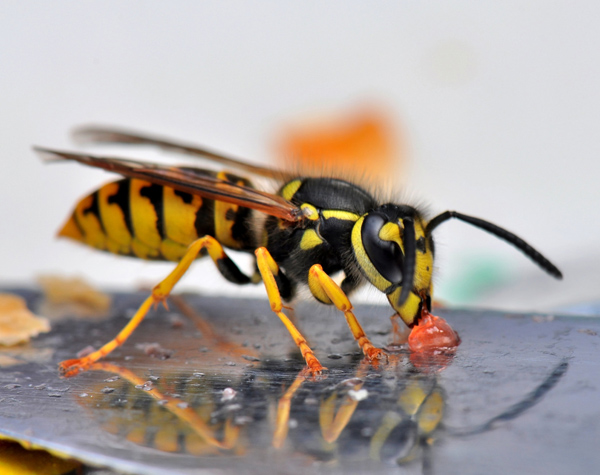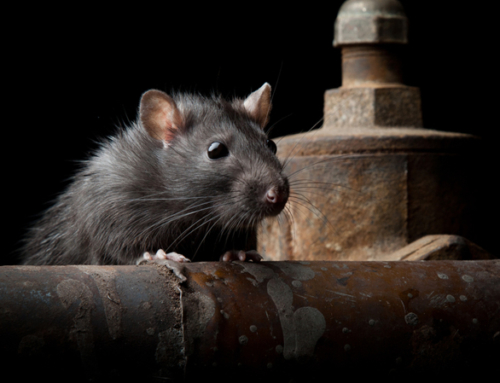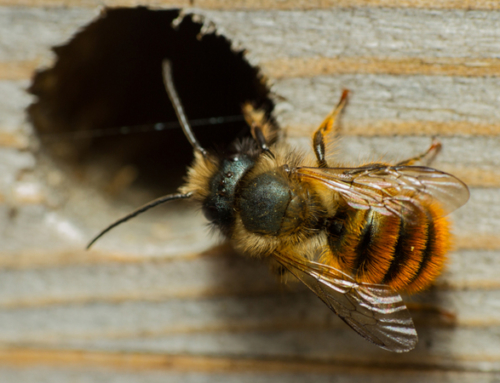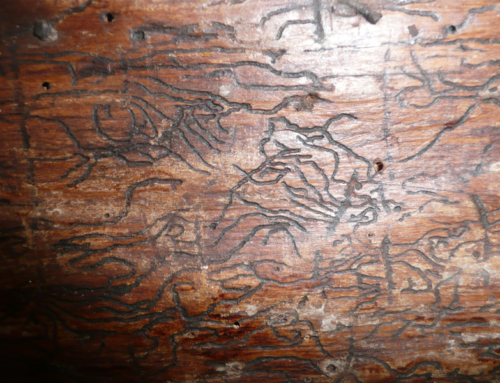Social wasps are often seen in British gardens where they can become something of a nuisance when food and drink are present. There are several species found in the UK including the common wasp (Vespula vulgaris), the German wasp (Vespula germanica) and the hornet (Vespa crabro) which is the largest, measuring up to 40mm in length. They all have sharp, tapered abdomens and are black and yellow striped. All wasps have a reputation for stinging but the needle-like sting is possessed only by females and is concealed near the tip of the abdomen.
As far as your property is concerned, wasps don’t do an awful lot of damage but they are often to be found in roof voids – particularly in older houses – which they favour because they are relatively warm and generally quiet spaces. Queen wasps hibernate over winter and emerge to build a nest in the spring. They build their nests from a mixture of wood and saliva – a kind of papier-mâché – which can be found as sizeable yellow/white/grey pear-shaped structures hanging high up in the rafters or sometimes down below the eaves. They occasionally use sub-floor ventilation grilles or similar areas to nest lower down. Nests are only used for one season, but if the home owner is finding them regularly, then it means the wasps have both an ideal territory and easy access.
It may be necessary to treat wasp nests which pose a particular danger to you or your family but unless such a danger exists, the nests are best left undisturbed. Although you can treat wasp nests yourself, great care should obviously be taken in doing so. Insecticidal dust should be applied at the entrance to the nest, ideally after dusk when the wasps have returned and settled down. The wasps will then carry the insecticide into the nest, spreading it to other wasps in the colony. Insecticidal dust is available from most DIY stores and garden centres but make sure that the product you buy is specifically intended for wasps. Since old nests are not re-colonised, treated nests need not be removed.
Bear in mind though, that upon entering a dark roof void and discovering a decent sized nest, you may well be armed with a high illumination torch which will attract any wasps on sentry duty. For a few moments, you will probably just experience a single solitary wasp buzzing round and sweeping down into the light beam. Then, as if by magic, there are three, and suddenly a dozen, and this is definitely the red flag signal – you really don’t want to be there any longer. Wasps are normally reasonably tolerant and won’t attack unless you exhibit aggression or sudden movement. That is as it may be, but they will definitely be interested in the light source and you are the one providing it, whilst probably balancing somewhat precariously on ceiling joists. This is probably going to be the time you remember that, unlike a bee, a wasp can sting many times and their venom is really rather unpleasant. So treat them seriously – and ideally, employ a decent company to get rid of them if necessary.
A single wasp nest can produce between 3,000 and 8,000 larvae in a single colony season, normally around 6 to 11 months duration. Unlike the germanicus, most of the vulgaris tend to die off during winter. If a nest is golf ball-sized and unfinished, like a cup fixed upside down to a timber, then it’s probably a work in progress. If the small golf ball is completely finished – and it’s winter time – then there is a real possibility it holds a hibernating queen. Anything much larger – with wasps all over it – is a pretty good indication of a serious and active colony, although a large, football-sized nest with no wasps around the perimeter is probably disused. However, this all presumes you are prepared to get close enough to check. Good luck with that!
Also remember that wasps are useful pollinators and are beneficial to gardeners in other ways too, catching and killing garden pests (such as aphids) to feed to their offspring. Really, unless the wasps are a serious nuisance, they are best left undisturbed.




